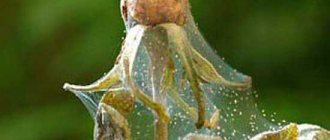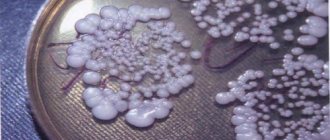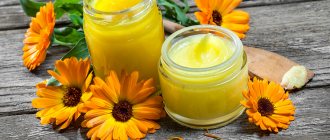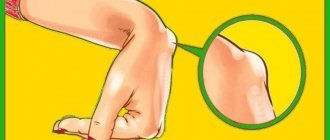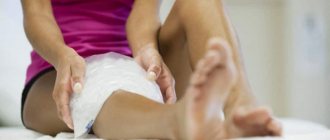In medicine, a boil is a purulent abscess that is localized in the hair follicle, and is popularly known as a common boil. The culprit behind the formation of boils is the most harmful strain of staphylococcus called aureus.
Under certain circumstances, a single inflammation turns into furunculosis, which is characterized by massive lesions. As a result, this disease is more difficult to fight. To prevent this, you need to know how to treat a boil at home and more about the nature of the appearance of these abscesses, the causes and, of course, treatment.
What is a boil
A boil or, more simply put, a boil is a banal inflammation with suppuration.
Affects the hair follicle and adjacent tissues with the sebaceous gland. From the onset of infection to full maturation, an average of 10 days pass. From the very beginning, a painful lump forms on the skin. At this time, the hair follicle gradually dies off in the follicle, ending with the formation of a necrotic rod. A mature boil opens on its own, i.e. breaks through, and the rod is rejected along with suppuration. Boils appear on the body for various reasons; in most cases, they can be cured at home without resorting to medical help. However, if the problem is permanent, you should not only visit a doctor, but undergo a series of examinations:
- blood analysis;
- immune system examination;
- bacterial sowing;
- dermatoscopy.
Treatment at home
If the immune system is functioning well, the boil will heal itself in 7-8 days. But to make the process go faster, you can treat boils at home:
- at the initial stage of development, it is necessary to lubricate the abscess with a solution of fucorcin or brilliant green;
- at the stage of compaction and swelling of the connective tissue, it is good to sunbathe in the sun;
- To make the boil empty faster, you need to apply ichthyol ointment;
- It is better to treat an opened abscess with hydrogen peroxide, and also apply bandages with sodium chloride or honey;
- When the boil begins to heal, it is recommended to apply bandages using Vishnevsky ointment.
To prevent the development of purulent formations, you need to shower daily. Do not scratch the itchy area on the skin. Among other things, it is recommended to wear clothes made from natural fabric.
Causes of boils
Staphylococcus aureus can be found on the skin of even a healthy person. But usually their number is so small that there can be no talk of any harm. For the development of a boil, they need to get into favorable conditions, i.e. inside the hair follicle. The following conditions contribute to this:
- increased sweating;
- scratches, abrasions, small cuts;
- diabetes;
- skin contamination with petroleum products;
- air polluted with suspended cement or coal;
- avitaminosis;
- immunodeficiency;
- increased sebum production during puberty;
- hypothermia;
- not quality food.
Now the reasons have become clear and treatment at home should be started at the first signs. To understand how best to do this, let’s consider all three stages of boil maturation.
First stage: the abscess is just forming
At the very beginning, there is slight redness at the site of the boil. Pressure on this area is accompanied by pain, and a compaction can be clearly felt. The purulent-inflammatory process continues and the boil increases in size, capturing the tissue adjacent to the follicle, but the pustule (the tip of the necrotic core) is not yet visible, since it has no outlet.
The infiltration process at the first stage continues for three days and purulent processes inside the boil begin only at the very end. You can stop further maturation of the boil by quickly responding to inflammation.
In general, at the first stage it is recommended to use ointments that draw out pus, which will contribute to the rapid maturation of the abscess.
Second stage: the boil has already developed
At this stage, the abscess increases in size to its maximum and takes on a conical shape ending in a pustule. Inside the boil itself, a protective ring of collagen fibers is formed, which blocks pathogenic bacteria inside the lesion.
If some people think that it is easier to squeeze it out than to treat it, then they are mistaken. Such actions can destroy the protective ring and provoke further spread of infection.
How to quickly cure a boil? Just adhere to the recommended treatment, because it will not be possible to remove it any other way without complications.
How to quickly treat a boil at this stage at home? At this time, it is best to take antibiotics along with painkillers, since in the second stage the pain intensifies.
A boil can also cause symptoms similar to a viral cold. At the very end, a breakthrough occurs, first the purulent contents come out through it, and then the necrotic core is rejected.
Therefore, you can quickly cure a boil, you just need to be patient and treat it correctly. This process takes on average 2-3 days.
Third stage: opening of the abscess
After the internal contents come out and the abscess cavity is cleaned. In its place, a small “crater” remains, which gradually begins to shrink, filling with connective tissue.
After a few days, it will leave a fresh reddish scar, which will eventually turn white. For successful treatment, the boil must be opened and drained simultaneously with disinfectant and healing preparations.
Treatment for furunculosis on the face
Treatment of furunculosis on the face, due to its location and possible complications, requires an integrated and competent approach. An appropriate set of therapeutic measures is developed by a dermatologist, and the patient’s task is to strictly implement them.
If the course of furunculosis is severe and is accompanied by fever and symptoms of intoxication, hospitalization and treatment in a hospital are necessary. In other cases, the doctor will explain in detail how to treat a boil on the face at home, but some procedures can only be carried out in a medical facility.
- Local antiseptic treatment
Before the boil ripens, the inflammation site is treated with 70% alcohol, salicylic alcohol or calendula tincture, furacilin solution, Xeroform powder. This is done to prevent the spread of infection. The area of inflammation, without pressure or sudden movements, is carefully wiped with an appropriate antiseptic several times a day; frequent changes of bed linen (pillowcases) are necessary.
- Physiotherapy
At the healing stage, UV therapy has a good effect, disinfecting the wound and promoting tissue regeneration. In order to speed up the maturation of the abscess, the use of UHF and laser therapy is indicated, which is possible in a physical room.
The use of dry heat when treating a boil on the face on its own is not recommended, since uncontrolled and sometimes incorrect actions can aggravate the situation. An ichthyol patch (not ointment) is applied to the area of the boil, which reduces pain symptoms, promotes the maturation of the boil and cleanses its cavity.
- Antibiotics for boils on the face
As a rule, in cases of chronic furunculosis on the face or abscess formation of elements, broad-spectrum antibiotics are prescribed, this avoids complications and contributes to the fastest resolution of the inflammatory element. They are prescribed even before the stage of opening the abscess; then, after examining the purulent contents, the prescription can be adjusted taking into account the sensitivity of the pathogen.
Main antibacterial drugs of choice
| Macrolides | Penicillins | Cephalosporins | Aminoglycosides | Tetracyclines |
|
|
|
|
|
Before the abscess breaks through, it is not practiced to prescribe local antibacterial therapy. Antibiotic-based ointment for boils on the face or Vishnevsky ointment can have a softening effect on the tissue, and this is dangerous for the spread of infection.
- Surgery
In most cases, the internal boil on the face must be opened, which helps to quickly cleanse the source of inflammation and prevent complications. The surgeon performs an autopsy of a mature boil under aseptic conditions using, if necessary, local anesthesia.
The opened boil is cleaned of purulent contents, washed with hydrogen peroxide, and the cavity is drained with the application of a sterile dressing with a hypertonic solution to remove pus, which must be changed periodically in a clinic.
For abscess furunculosis, after opening and removing the pus, bandages with ointments are prescribed - Erythromycin, Syntomycin, Levomikol. Every other day, the bandages are replaced, and then ointments with ichthyol or Vishnevsky ointment are used to speed up healing.
- Maintaining rest of the face and facial muscles
This is a prerequisite for a favorable course of the inflammatory process. The diet is adjusted to exclude solid foods that need to be chewed intensively.
- Immunomodulators
Immunostimulating and strengthening drugs are indicated for recurrent furunculosis. T-activin, interferon, rhinoleukin are used. Antistaphylococcal immunoglobulin is administered in cases of frequent, recurrent and prolonged furunculosis. Ready-made antibodies against staphylococcus are introduced into the human body.
- Autohemotherapy
This technique is aimed at natural blood purification and is indicated both for the prevention of relapses of a single boil and for recurrent furunculosis. The injection of one's own blood intramuscularly is carried out in courses according to a special scheme, but only during the period when the boil has completely resolved.
- Absorbable ointments
Treatment of a formed scar at the site of a former boil is not mandatory, but is often carried out at the request of the patient, since large boils may leave unsightly connective tissue scars. For these purposes, special ointments that absorb scars and regenerate tissue, for example, Contractubex, are used for a long time.
How to treat a boil at home
If a boil begins to form, treatment can be carried out at home, but a consultation with a dermatologist will still not be superfluous. This is especially true in cases where an internal boil forms, because it is characterized by an internal breakthrough and pus enters the deep layers of the dermis, and this in turn is fraught with relapse and sepsis.
To heal the boil, antibiotics, disinfectants and pulling ointments are used.
It can appear anywhere except the palms and soles, since there are no hair follicles there. Treatment of a boil on the back is no different from treatment of an abscess in any other place.
Antibiotic treatment
In cases where the boil is large or located in sensitive areas, and its development is accompanied by intoxication, chills and severe inflammation, the surgeon prescribes antibiotics.
For a large boil and a slight increase in temperature, a weekly course is prescribed: the doctor prescribes clindamycin or doxycycline.
At high temperatures and severe inflammation, a two-week course of treatment is most often prescribed, which includes stronger antibiotic drugs: rifadin, rimactan or other analogues.
Don’t forget, Staphylococcus aureus easily adapts to a variety of antibacterial agents, and as soon as the body’s defenses are slightly reduced, they multiply and form new abscesses. Therefore, people with reduced immunity should immediately consult a doctor and not self-prescribe medications. Keep in mind that if you relapse, they will no longer help you!
This article is for informational purposes only, please consult your doctor for details!
Ointments against boils
At each stage, ointments and agents with different properties are used. Before applying the ointment, the boil and the area around it must be disinfected. The order of treatment is from the edges of the inflamed area to the middle, so as not to spread bacteria to healthy skin.
For the first stage, a suitable remedy is ointments that will accelerate the maturation of the boil, and after it has opened, you need to use ointments with pulling properties.
Surely many people have childhood memories of how their mother applied ointment to a rotting wound - and everything healed. To treat boils, you can successfully use the same ointments familiar from childhood. Let's list them in order:
Levomekol is a broad-spectrum ointment containing the antibiotic Levomiticin. Can be used by both adults and children. In addition, Levomekol is allowed during pregnancy.
Ichthyol ointment. Another cheap effective remedy that has anti-inflammatory, astringent and antimicrobial characteristics. Ichthyol ointment against boils is an ideal remedy.
Vishnevsky ointment. Bandages with Vishnevsky ointment against ulcers have been used for decades. It contains little castor oil, tar and xeroform antiseptic. In addition to antiseptic properties, it has the ability to anesthetize, dry and regenerate tissue.
Medications
In most cases, the maturation and opening of the boil occurs without complications, so anti-inflammatory therapy can be dispensed with.
The main treatment should be strengthened with antibiotics if: purulent inflammations appear in dangerous areas (neck, head, nasolabial triangle), the disease is complicated by inflammation of the lymph nodes, or abscesses appear too often. This treatment is supplemented with immunomodulators and a vitamin complex. Antibiotics for the treatment of boils are prescribed:
- Penicillins – Ampicillin, Amoxicillin, Bicillin;
- Cephalosporins – Cefuroxime, Cefazolin, Cephalexin;
- Macrolides – Azithromycin, Macropen, Erythromycin.
Traditional methods
In folk medicine there are many recipes against various skin diseases. And using them, you can easily remove the boil. The best of them:
Pine baths
Dissolve 20 drops of fir oil in warm water. You need to take a bath with pine aroma 1-2 times a day for 20 minutes.
Laundry soap
The most ordinary soap is suitable. You need to grate it, pour a glass of water and after a while put the soap solution on the fire. After boiling, reduce the heat to low and cook until the water boils. As soon as the mass has cooled, it is applied to the abscess and a gauze bandage, cling film are placed on top and secured with an adhesive plaster. After four hours you need to change the compress and stop when the abscess opens.
Honey cake
Mix a teaspoon of boiled chicken yolk, 1.5 tsp. honey and 0.5 tsp. butter. The recipe is suitable until the purulent masses come out.
Honey dough
You will need honey and flour. Honey dough is made from them by thoroughly mixing flour and honey WITHOUT ADDING water. Apply the resulting dough to the area with the boil overnight and cover with a regular plastic bag. This dough will help get rid of the boil at the initial stage without further ripening. Later, it is possible for a boil to appear again in this place after a decrease in immunity in the body due to fatigue or illness, but this is rare.
Urine
An excellent product that is suitable for external use and has antiseptic, softening and stretching properties. These properties have been tested many times and surprisingly work. Therefore, purulent wounds, abscesses and boils can be treated with urine.
What do we have to do?
Take cotton wool or a cotton swab, soak it in your urine and apply it to the abscess overnight; the swab is covered with a plastic bag or tied with a bandage.
In the morning, after removing the bandage with a tampon, treat the sore spot with a solution of potassium permanganate and apply a new bandage with a tampon as indicated above. As a rule, after two nights of bandages, the abscess opens.
Aloe leaf against chiria
On almost every windowsill you can find this plant with pointed, fleshy leaves. It is its leaves, or rather its inner part, that has the necessary properties.
Using them is very simple:
Take the thickest section of the leaf, cut it lengthwise and apply the inside to the abscess. The aloe leaf is fixed with a gauze bandage and adhesive tape. Aloe needs to be changed every three hours. Aloe lotions really help to quickly cure a boil and, most importantly, this medicinal plant is always at hand.
Folk remedies for treating boils
To speed up ripening, you can use traditional medicine recipes.
- An aloe or Kalanchoe leaf is moistened with iodine and applied to the boil for several hours. The procedure is repeated until the boil breaks completely.
- Laundry soap is no less effective for drawing out pus at home. It is grated, placed in a metal container, milk or water is added, and boiled. When the mass dissolves, it is applied to the affected area. The dressing is changed several times a day.
- To make the boil open faster, you can attach a head of onion baked in the oven to it. It needs to be cut and applied to the abscess.
- A compress of fresh golden mustache leaves is another well-known folk remedy for treating boils.
- Honey cake is a popular way to help cope with boils. You need to mix one tablespoon of honey with flour. The paste is applied to the inflammation and a compress is applied.
- Plantain leaves have a bactericidal effect. It is necessary to apply a couple of leaves to the boil and secure them.
Before the advent of medicines, people used rye bread, chewing it and applying it to the abscess. Some washed the abscess with silver water.
Plot for boils
The most important thing in conspiracies is to believe in them, then they will definitely work. People very often had a problem with boils. And incorrect treatment could have ended in failure earlier; it was not possible to see a surgeon in every place. Therefore, conspiracies were very popular for treating this disease.
On pepper
Take 3 grains of black pepper, eat it and, chewing it, begin to draw crosses with the pad of your finger, saying: “And one, and two, and three... and ten.” Do this every day until the already formed boils heal.
By hand
Move the ring finger of your right hand slightly over the boil (clockwise), and say:
“This finger has no name. This place has no pain. Just as a twig dries up, so the pain subsides.”
Repeat three times, spit over your left shoulder. The boil will either burst quickly or, conversely, simply disappear.
By prayer
We say clearly and confidently: “In the name of the Father and the Son and the Holy Spirit. Amen. I’ll say a word, I’ll say a word, I’ll say a word. All chiria, All vereda, All abscesses, etc. The servant of God (name) has all the evil spirits.” speak 3 times. At the same time, draw a circle over the boil with a knife, then, while pronouncing the last word, make a cross over it with a knife (without touching) and stick the knife into a knot on the wall or door.
Conspiracy with words
We pronounce clearly and confidently: “As the branch of a tree dries, so would the boil dry; just as a stone turns to stone, so would the boil turn to stone; There are no shoots from the stone, so there would be no boils. Don’t rise higher, don’t spread yourself wider, you came with good and go away.”
Using the board
Find a board with a knot. Move your finger first along the knot, then along the boil and say the following words: As the branch dries up, dries up, so let the slave (name)’s boil dry up, dries up. Amen.
Features of the treatment of boils
As already mentioned, a boil can develop in various parts of our body. How can you treat chiryak at home if it is located:
On the eye
A boil may appear in the eyebrows, eyelids, and corners of the eyes. The skin around the eyes is very sensitive, so severe pain that worsens when blinking is possible. In addition, the danger is that the abscess is too close to the eyes, so the development of an eye infection cannot be ruled out. Before starting home treatment, it is better to consult with a specialist to prevent this from happening.
On the face
Treatment does not differ from the standard one, but when multiple boils occur, the risk of a carbuncle with further infection of the bloodstream increases.
On the cheek
The appearance of a boil can be confused with a regular pimple, especially at the very beginning. Attempts to squeeze out may result in the spread of infection, which will be more difficult to cure. The rest of the treatment will be standard: compresses, lotions and ointments.
Nose area
This is a dangerous area; after the abscess heals, the nose may become slightly deformed. Treatment is supplemented with antibiotics.
Boil on the ear
How to remove boil in ear?
Some believe that you can speed up the ripening of boils by using a heating pad with hot water.
However, this can be dangerous, since premature breakthrough of the abscess is possible. Remove the abscess at home using standard products and ointments.
If the patient has a stable high temperature, blood poisoning is possible. This condition requires prompt hospitalization.
Boils on the hand
They appear quite often, especially if, due to their profession, a person is exposed to constant pollution and exposure to chemicals. The treatment is quick and without complications.
Boil in the armpit area
It can cause severe pain, fever, headaches and brings great discomfort. These symptoms disappear as soon as the abscess opens.
Boil on pubic area
Not uncommon, especially for those who are used to shaving this area. Staphylococci easily penetrate microcuts after shaving. Treatment of a boil on the pubis is standard, but it is better to supplement it with antibiotics, Tetracycline or Diclosacillin.
Neck
Another dangerous place. In case of complications, the pus will enter the bloodstream, causing purulent inflammation of the brain. For the same reason, any mechanical actions are prohibited, be it squeezing, combing, or piercing.
On the back
How to cure a boil on the back at home? Using the standard regimen, the boil will go away within 10 days, but if the disease recurs, you should visit a dermatologist and other specialized specialists.
On the butt
A mature boil is a very painful process, and in this place it is possible that an internal boil may form, which can only be removed surgically. If within a few days the inflamed area has increased, but the pustule has not appeared, you should see a dermatologist.
On the foot
Treatment of boils follows the following scheme: compresses with medicinal ointments, taking antibiotics and vitamins, disinfecting the affected area. The only condition is to exclude any physical manipulation of the abscess.
Features of treatment in accordance with the localization of the boil
Depending on the location of the purulent focus, the methods of treating the disease differ. Some methods are suitable when boils appear on the face, others are used when they appear on other parts of the body.
On the foot
There are many hair follicles on the legs of men, women and even children. In summer, boils often appear on them. In treatment, it is allowed to use folk and pharmacy remedies without fear of harming surrounding healthy tissues.
On the face
The delicate skin of the face is thinner than on other parts of the body. The boil forms on it faster and bursts within a few days. It is especially difficult to cure a boil at home when it is located in the area of the nasolabial triangle. Self-medication in this case is very dangerous.
In the facial area, you should not use aggressive folk remedies and ointments, which can get on the mucous membranes and cause unpleasant symptoms.
On the eye
Self-medication is strictly contraindicated if the boil is localized in the eye area, on the upper or lower eyelid. The funds should be selected only by a specialist after a thorough examination and study of test results.
In the groin
A purulent focus in the groin area is difficult and takes a long time to treat. This area is constantly in contact with underwear, the friction of which provokes deterioration. Treatment in the case of an acute process should be carried out by a surgeon. Often boils in the groin area are opened.
Under the arm
The armpits, like the groin area, are constantly in contact with clothing. This area has high humidity, and boils provoke extreme discomfort. If a large lesion forms, experts insist on its surgical removal and washing the wound, followed by application of a sterile bandage.
On the butt
On the buttocks of most patients there is a fairly large layer of fat. Therefore, boils in this area are usually large and painful. In acute cases, they cause serious discomfort to the patient. Sometimes doctors do not insist on removing the boil because it ruptures on its own, but more often intervention is required to speed up recovery and prevent complications.
Prevention of occurrence
You can prevent the formation of boils using the following rules:
- Personal hygiene, especially during puberty;
- Antiseptic treatment of injured skin;
- Timely treatment of pyoderma;
- Healthy lifestyle;
- Eating healthy food;
- Control over your health.
As you can see, it is easy to treat boils yourself, but only if you adhere to the recommended treatment. If neglected, the boil will cause a more serious illness, remember this, and rush to the dermatologist if home treatment is ineffective.
Add your recipes for fighting boils in the comments; many people may find your proven recipe useful.



